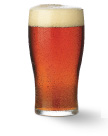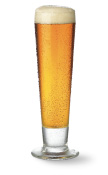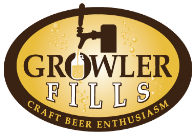Pairing Terms and Interactions
- Complement: When one item from a craft beer or food complements the other during pairing.
- Counter/Contrast: When elements interact and either heighten or calm each other’s intensities. Malty sweetness counters the sugar sweet of a food and lessens the sweetness.
- Cut: The bitterness of hops cut and lessen the impact of fat, richness and oil in food. This allows you to more easily identify flavors and taste elements. Cutting also occurs from carbonation and acidity.
- Home run: When a craft beer and food pairing elevates the taste experience. The whole is better than the individual parts. 1 + 1 = 3!
- Train wreck: A clash of elements or flavors from the meeting of food or craft beer. A train wreck is when the whole tastes less desirable than the individual parts. 1 + 1 = -1. Think orange juice and toothpaste. Yuck!
- Rest: When your craft beer or food ingredients provide a break and help renew and reset your palate. A rest can be an intermezzo in the middle of the meal.
- Bridge: Where craft beer and food meet ingredient to ingredient. Bridges help you find harmonies, also referred to as flavor hooks.
- Echo: When one flavor, sensation or intensity repeats
- the other. These create more pairing harmonies.
- Harmony: A synergistic marriage of flavor and taste elements.
Malt
- The sweetness of malt reduces the heat of spicy food. In comparison, wine’s higher alcohol actually accentuates the warmth from many spices, which can be undesirable.
- Malt-forward beer styles include: brown ale, bock, porter, red ale, scotch and scottish ale, stout and Vienna lager
- The flavors of malt, which can range from caramel, chocolate, graham cracker, roast, toasted and toffee, harmonize with grilled, roasted and smoked foods because share many of these same flavors.
Hops
- Hop bitterness cuts through the fat in food, lessening the dense heavy feeling in your mouth. This allows you to more fully taste the ingredients of your dish and enjoy the true flavors of both your craft beer and food.
- Hop bitterness balances both malt and food’s sweetness.
- Hops may intensify spices and heat. A good rule of thumb is to pair malt-forward beers with spicy foods and hop-forward beers with rich or fatty foods.
- What hops bring to the tasting party depends on when they were added to the batch of beer and the type of hop used.
Carbonation
Beer’s carbonation (bubbles) works to scrub the tongue of fat and prepares your palate for the next bite.
Salt
Salt flavors in food counter acidic flavors in beer—sour or wild ales become less acidic with salty foods. Sour beer styles include: Berliner weiss, gueze, lambic, flanders red and many “wild” or funkified beers.
Acidity
Acidity exists to a certain extent in all foods, especially tomato dishes and many salad dressings. When you match acidic food with acidic beer, they nullify each other and only mute the overall acidity. This is desirable and helps enhance the enjoyment of both the dish and the beer.
Sweetness
Sweetness in either food or beer paired with an acidic counterpart increases the acidity. So avoid pairing sweet and acidic flavors together—imagine toothpaste and orange juice.
The same effect of acidic food with acidic beverage happens when you pair sweet with sweet. Try pairing a Belgian quadruple (often over 10% ABV) with a dense sweet dessert. You’ll see how the sweetness of the beer lessens the sweetness of the dessert and vice versa.
Fat
Acidic beverages cut fat, and that helps the palate sense more of the flavors from a fatty, rich or dense dish. See the above section on hops to learn why craft beers, which tend to be more bitter than mass produced lagers, work so well with dishes on the richer side.
Spice, Herbs and Heat
There are fundamental differences between spice, herbs and heat. For our discussion, we want to talk about heat—those additions to food that make your eyes water and your nose run—think capsaicin from chili peppers or pepper flakes.
Heat intensifies alcohol, and as the alcohol penetrates your tongue and lips it acts like a solvent, which opens up your senses even more to the heat! The higher the ABV, the more you’ll notice this effect.
Be careful when pairing spicy foods with higher alcohol beverages as the pairing leaves you more vulnerable to the heat used to flavor your dish. Restrained heat and alcohol is nice, and creates a warming sensation in the mouth, but too much heat and alcohol is like throwing oil on fire.
Cheers and happy pairing!
Brewmaster’s Note
Ales and Lagers provide their best flavor when served at a temperature
of 40-50°F.
Guide to Beer and Food Pairing

Ales
The fruity, estery taste of ales is created with
top-fermenting ale yeast and warmer temperatures.
Attributes
- Top-fermenting yeast
- Warmer temperatures
- Fruity, robust flavor
Belgian Witbier
Profile:
Unfiltered with orange, citrus and coriander aromas
Food Pairing:
Complements salads with light citrus dressings and feta or goat cheese as well as ceviches and other light, citrus-flavored dishes.
Cheese Pairing:
Smoked Gouda
Glass:
![]()
Pilsner
Hefeweizen
Profile:
Unfiltered with unique clove and banana aromas
Food Pairing:
Classically paired with weisswurst (white sausage); contrasts with pungent, intense aromatics such as mustard flavors, pickles, horseradish and cured meats.
Cheese Pairing:
Aged Gouda
Glass:
![]()
Weizen
Blonde Ale/Cream Ale
Profile:
Smooth malty sweetness and balanced bitterness
Food Pairing:
Pairs perfectly with sweet, hot, or spicy foods including many Asian dishes, chili, mango or jalapeño salsa.
Cheese Pairing:
Brie
Glass:
![]()
Mug
![]()
Pale Ale
Profile:
Malty sweetness balanced by hoppy bitterness
Food Pairing:
Hops bitterness contrasts with spicy, heat-charred, smoky, or aromatic flavors such as those in Stilton and blue cheese.
Cheese Pairing:
Blue Cheese
Glass:
![]()
Pint
![]()
India Pale Ale
Profile:
Increased maltiness with prominent hoppy aroma & flavor
Food Pairing:
Complements intensely flavorful, highly spiced dishes, such as curry, and bold, sweet desserts like flourless chocolate cake and crème brulée.
Cheese Pairing:
Provolone
Glass:
![]()
Pint
![]()
Amber Ale
Profile:
Sweet caramel notes and citrusy aromas with smooth finish
Food Pairing:
Complements rich, aromatic, spicy and smoked foods such as chili, BBQ ribs, grilled chicken, and beef.
Cheese Pairing:
Gruyère
Glass:
![]()
Pint
![]()
Brown Ale
Profile:
Malty flavor balanced with hints of caramel and chocolate
Food Pairing:
Pairs well with roasted pork, smoked sausage and hearty foods; complements the nutty flavors of chicken satay, cashew chicken, pecan pie and peanut sauces.
Cheese Pairing:
Cheddar
Glass:
![]()
Pint
![]()
Porter
Profile:
Roasted flavor complemented by nutty and toffee characteristics
Food Pairing:
Works well with smoked meats, especially bacon; complements chocolate-, espresso- and coffee-flavored desserts and soft, creamy cheeses.
Cheese Pairing:
Gorgonzola
Glass:
![]()
Mug
![]()
Stout
Profile:
Prevalent chocolate and coffee flavors
Food Pairing:
Highlights the nuttiness and braised, caramelized integrity of dishes with brown, savory sauces; complements silky, salty foods like oysters on the half shell.
Cheese Pairing:
Aged Gouda
Glass:
![]()
Pint
![]()
Barley Wine
Profile:
Strong natural sweetness with a slight hoppy bitterness
Food Pairing:
Strength of flavor often overpowers main dishes; better suited as a complement with strong cheeses or rich, sweet chocolate and caramel desserts.
Cheese Pairing:
Stilton
Glass:
![]()
Sniffer
![]()
Lambic
Profile:
Crisp, dry and cidery with a subtle sour flavor
Food Pairing:
Can complement light, fruity dishes; best served as a companion with after-meal foods like desserts featuring fruit or dark chocolate.
Cheese Pairing:
Blue Cheddar
Glass:
![]()
Flute

Lagers
Lagers are fermented with bottom-fermenting yeast at cooler temperatures than those used to ferment ales, typically producing a drier, crisper beer with less fruity characteristics.
Attributes:
- Bottom-fermenting yeast
- Colder temperatures
- Crisp, delicate flavor
![]()
Light Lager
Profile:
Most popular style worldwide. Very refreshing & thirst-quenching
Food Pairing:
Complements lemongrass, ginger, garlic, cilantro and similar flavors; adds depth to light dishes such as spring rolls and salads.
Cheese Pairing:
Morbier
Glass:
![]()
Pint
![]()
American Lager
Profile:
Balance of hops and malt with crisp, dry finish
Food Pairing:
Offers the perfect contrast to Thai, Pan-Asian, Latino Fusion, Mexican, Peruvian and other spicy cuisines.
Cheese Pairing:
Brie
Glass:
![]()
Pint
![]()
Pilsner
Profile:
Pronounced hops aroma and bitterness with a refreshing finish
Food Pairing:
Works well with salmon, tuna & other high-fat, oily fish and with marbled meats; bitterness offers pleasing contrast with sweet reductions and sauces.
Cheese Pairing:
Chèvre
Glass:
![]()
Pilsner
![]()
Amber Lager
Profile:
Roasted, malty sweetness with well-balanced, dry bitterness
Food Pairing:
Sweetness pairs well with sundried tomato reduction sauces; balanced hopping complements foods flavored with basil and oregano.
Cheese Pairing:
Manchego
Glass:
![]()
Pint
![]()
Märzen Oktoberfest
Profile:
Mildly hopped with complex malt character
Food Pairing:
Caramelization of malts complements that of char-grilled and seared meats or hearty, spicy Mexican dishes.
Cheese Pairing:
Smoked Gouda
Glass:
![]()
Mug
![]()
Bock
Profile:
Rich, sweet caramels and warm, toasty flavors
Food Pairing:
Rich sweetness balances strong spice components & intense flavors of Cajun, jerk, slow-roasted and seared foods.
Cheese Pairing:
White Cheddar
Glass:
![]()
Goblet
About Us
When looking for fine wines, 20-year-old single malts or the latest local lagers, one name stands above the crowd – Whiteys Liquors. Since 1954, we've been your one-stop shop for any spirited celebration. No matter the moment, we’ll help you make the most of it.
june
No Events

